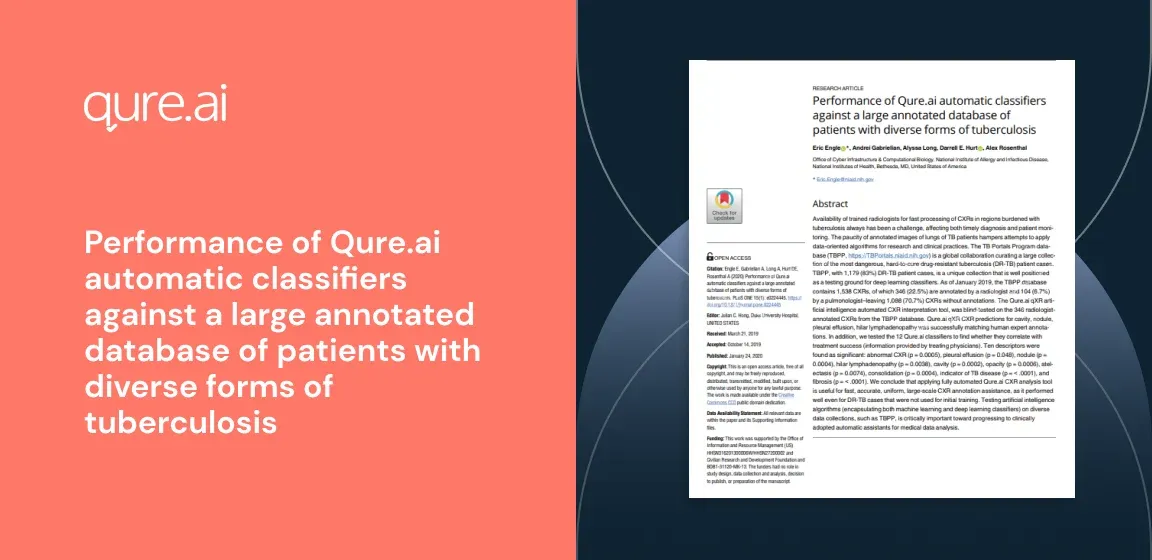Availability of trained radiologists for fast processing of CXRs in regions burdened with tuberculosis always has been a challenge, affecting both timely diagnosis and patient monitoring. The paucity of annotated images of lungs of TB patients hampers attempts to apply data-oriented algorithms for research and clinical practices. The TB Portals Program database (TBPP, https://TBPortals.niaid.nih.gov) is a global collaboration curating a large collection of the most dangerous, hard-to-cure drug-resistant tuberculosis (DR-TB) patient cases. TBPP, with 1,179 (83%) DR-TB patient cases, is a unique collection that is well positioned as a testing ground for deep learning classifiers. As of January 2019, the TBPP database contains 1,538 CXRs, of which 346 (22.5%) are annotated by a radiologist and 104 (6.7%) by a pulmonologist–leaving 1,088 (70.7%) CXRs without annotations. The Qure.ai qXR artificial intelligence automated CXR interpretation tool, was blind-tested on the 346 radiologist-annotated CXRs from the TBPP database. Qure.ai qXR CXR predictions for cavity, nodule, pleural effusion, hilar lymphadenopathy was successfully matching human expert annotations. In addition, we tested the 12 Qure.ai classifiers to find whether they correlate with treatment success (information provided by treating physicians). Ten descriptors were found as significant: abnormal CXR (p = 0.0005), pleural effusion (p = 0.048), nodule (p = 0.0004), hilar lymphadenopathy (p = 0.0038), cavity (p = 0.0002), opacity (p = 0.0006), atelectasis (p = 0.0074), consolidation (p = 0.0004), indicator of TB disease (p = < .0001), and fibrosis (p = < .0001). We conclude that applying fully automated Qure.ai CXR analysis tool is useful for fast, accurate, uniform, large-scale CXR annotation assistance, as it performed well even for DR-TB cases that were not used for initial training. Testing artificial intelligence algorithms (encapsulating both machine learning and deep learning classifiers) on diverse data collections, such as TBPP, is critically important toward progressing to clinically adopted automatic assistants for medical data analysis.

Authors
Eric Engle 1, Andrei Gabrielian 1, Alyssa Long 1, Darrell E. Hurt 1, Alex Rosenthal 11
Citation
1. Office of Cyber Infrastructure & Computational Biology 2. National Institute of Allergy and Infectious Disease 3. National Institutes of Health 4. Bethesda 5. MD 6. United States of America